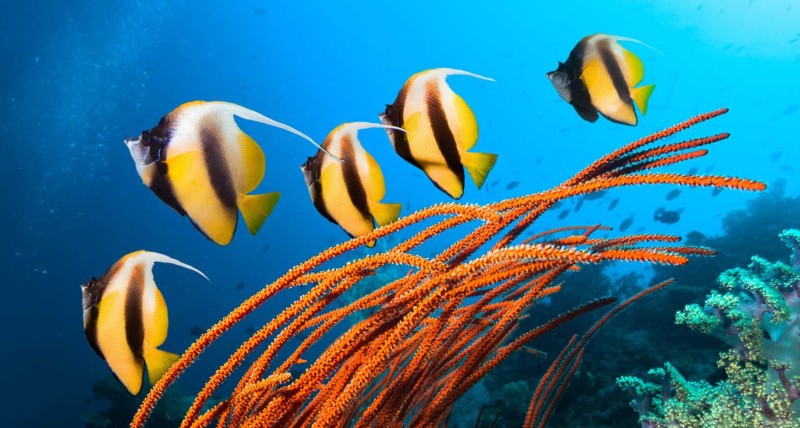The CNRS research director at the Functional and Evolutionary Ecology Center in Montpellier holds an ecological chronicle for Libération: « The Screaming Albatross ». Today, the adaptation of certain corals to high temperatures.
:quality(70):focal(1685x1520:1695x1530)/cloudfront-eu-central-1.images.arcpublishing.com/liberation/XHW7UQXPGJEYTE7NEIIUSKU4IA.jpg)
Finally, healthy coral. I am diving in Raja Ampat, in Indonesian Papua. My study subject is sea turtles, but I am struck by the beauty of the seabed. The marine protected area, established by local communities, is home to 75% of all coral species, 40 of which exist nowhere else. An incredible diversity of shapes and colors results, colonizing the shallow waters and drop-offs, where visibility often exceeds 25 meters. The extent and complexity of these reefs offer an infinite number of habitats for thousands of other species, from the tiny yellow seahorse to the grey shark.
Almost three-quarters of the world’s corals are bleaching under the strain of climate change. However, those in Raja Ampat are thriving, despite water temperatures reaching 30°C. In comparison, the reefs of Port Cros National Park suffer as soon as the water temperature exceeds 25°C. What is the secret of the Papuan corals? For my Indonesian colleagues, these equatorial organisms are pre-adapted to temperatures that can reach 36°C.
But what happens beyond this limit? A French-Australian study, led by Hugo Denis from the Entropie Laboratory / Sorbonne University, explored this topic on the Great Barrier Reef in Australia. In 2022, after about thirty dives, scientists collected fragments from 768 colonies of Acropora spathulata, a branching coral with green, blue, or yellow hues, and orange tips. The samples were taken from 14 reefs spread over more than 1,000 km, covering most of the Great Barrier Reef along a north-south axis. In aquariums aboard their research vessel, the scientists subjected the corals to a range of very high temperatures for 24 hours, then measured their chlorophyll concentration and ability to maintain photosynthesis. Indeed, when temperature stresses corals, they expel the symbiotic algae that nourish them through photosynthesis.
The study confirms that corals closer to the equator are generally more resistant to very high temperatures. Furthermore, corals regularly exposed to marine heatwaves tend to maintain a high photosynthetic activity during thermal stress, suggesting acclimatization mechanisms. However, populations exposed to heatwaves in the preceding months bleach more.
But not all coral colonies are equal when it comes to warming: by comparing their responses to thermal stress, Hugo Denis and his colleagues found that the temperatures causing bleaching can vary by 3°C within the same reef, and by 6°C between different reefs. Thus, some colonies of the same coral species are genetically adapted to higher temperatures when compared to their neighbors.
This variability provides a « survival insurance », promoting the natural selection of thermally tolerant individuals, who will endure and pass on their genes to future generations.
For Hugo Denis, « This study suggests a potential for adaptation to ocean warming. However, our research shows that the northern reefs of the Great Barrier Reef, although tolerant of higher absolute temperatures, already live in conditions close to their thermal limits. This was unfortunately confirmed this year during the last mass bleaching event: in November 2024, we returned to the reefs sampled in 2022; in some places, over 90% of Acropora spathulata colonies had succumbed. To hope for healthy coral reefs in the future, honoring international climate commitments remains an absolute priority. »
Source: liberation



